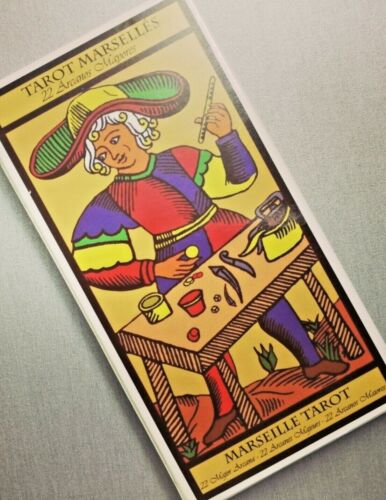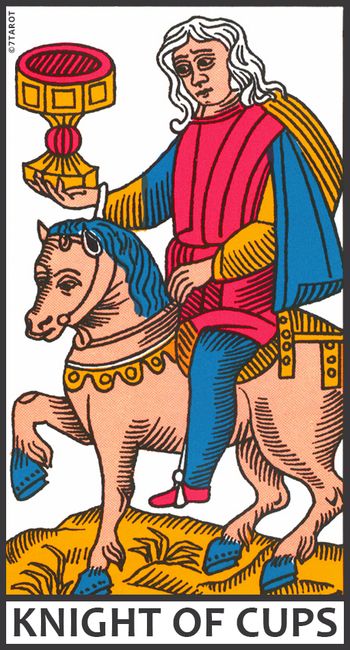
Palmistry is an ancient art that uses your hands as a map for understanding your personality. A map can reveal everything about you, from your past and your potential. Through interactive illustrations and a palmistry book, you will learn how to interpret your hand's energy. The book will take you through the four types of hands and help you understand what the lines and marks are on your fingers. You will also find out about the meanings and rings on your hands.
Hands: The Complete Guide To Palmistry
The hand is an essential part of a person’s personality. Therefore, it makes sense that you learn how to interpret its form and features. The four basic shapes are earth, fire water and water. Each of these elements has specific characteristics that reflect aspects of a person's character and personality. These characteristics are reflected in the lines and creases on the hand.
LifePrints. Your Fingerprints are the Key to Your Life's Meaning
Your fingerprints are unique. We've been using them as a means of personal identification for a century, but did you know your fingerprints can also help you find your life's purpose? Richard Unger, an author, shares how fingerprints can be used to help you find your purpose in life.

Each person's fingerprint is unique and formed five months before they are born. Because they are unique, fingerprints can be used to identify oneself. Richard UNger offers a unique method to self-discovery.
Cheiro the Palmist
Cheiro the Palmist, a well-known palmist, predicted the future right up to the hour. Cheiro, despite all his fame, was a loner who refused human contact. His lonely lifestyle almost cost him everything. While he had many admirers, Cheiro wasn't able to write books on his techniques and methods.
Cheiro, the Palmist, is one of the most prominent palmists in history. His revelations about the Line of Life are well-known. He believed that the Line of Life relates to every aspect of life. The line should be a long, narrow, and deeply drawn. A person who has a long, narrow, and deep line will be in good health.
Benham Book of Palmistry
This practical guide to palmistry first appeared in 1900. This book contains more than 800 illustrations taken from actual life as well as a wealth information about palmistry. This treatise discusses the basics of our work, plan of creation, mount types, life current, general attributes of the lines, and pose and carry of hand.

Benham describes different hand formations known as mounts, and explains that each mount represents distinct virtues and faults of a person. The mounts also represent a different astrological sign. Jupiter is the sign Jupiter and Saturn the sign Saturn. Venus is the sign for Venus.
Eason's palmistry book
Cassandra Eason’s A Little Bit of Palmistry gives a good introduction in palm reading. It contains the basics of palm reading and their interpretations, as well as the head and heart lines and the lines of destiny and life. It's a great starting book for beginners, with 109 pages.
Palmistry is an exciting method to learn. It can be used to predict the future, identify challenges and opportunities, and determine compatibility in relationships. It is a fun and accurate method of divination that many people enjoy. Some books focus on the Active hand, which is the main writing hand. This hand records potentials and opportunities as well as challenges.
FAQ
What does it cost to have a hobby?
Time is all that's required to make a hobby a success. But it could take years to achieve what you want if you are serious about it.
But there is one thing you can do to help yourself. It's called "passion". If you have passion about something, it will make it easier for you to work hard.
Once you put in the hours, you might find yourself addicted to the activity. Here is the fun part! Because you're doing something you like and it keeps getting better. So by the end of the year, you will probably have made quite an improvement.
It doesn't matter how long it takes. Try it! You might be surprised by what you find!
What are educational hobbies?
An educational hobby is a activity that allows you to learn by doing it. This could be anything you want, such as playing sports or learning how to play an instruments.
It should be enjoyable and fun for you. It doesn't have to be done all the time. However, if you get bored of it, you should think about other things you can do instead.
These activities can also be costly so make sure you don't spend too much.
How can I get started in my new hobby?
First, decide what type or activity you want to pursue.
Passion is essential once you have selected your subject.
It's important to understand why you want to start a particular hobby. This will help you find direction and a purpose.
After you have decided on the type of hobby you want to pursue, it's time to start planning.
You should think about the equipment you'll need.
Consider whether classes or seminars are necessary.
You should ensure that you have enough space to enjoy your hobby.
You might also consider joining a club. These groups often offer advice and support.
Consider how much money you would have to spend on your hobby.
What is observation hobby?
Observation hobbies are activities where you observe people doing what they do. These hobbies could include reading books, watching sports, or going on vacation. You could also observe other people.
Because they teach you how to think creatively, observation hobbies are great. You can apply this knowledge later on when you work with others.
You'll find that if you're interested in something, then you'll have an easier time learning about it.
If you are interested in learning more about football, for example, you might watch a match or read a book. If you want to learn more about photography, you could take or visit exhibitions.
You can play along with songs online or purchase a guitar if you love music.
You could also choose to cook at home or go to restaurants if you are a good cook.
If you love gardening, you might grow vegetables or flowers.
If dancing is something you enjoy, join a dance class.
You can paint pictures if your passion is painting.
Writing poetry or stories is a passion if you are a writer.
Drawing pictures is a great hobby.
If you love animals, you could look after pets or work at a zoo.
If you like science, you could study biology, chemistry, physics or maths.
History is something you might enjoy if you read books, watch movies, or listen to podcasts.
If you like traveling, you could travel abroad or explore your local area.
Where can I find free resources to learn more about hobbies?
Many websites are dedicated to helping people find new hobbies.
Here are some of our favorite:
www.trythisathome.com - This site provides a list of over 100 different hobbies. This site also contains information on how you can get started with each of them.
www.hobbyfinders.org is a site that offers thousands of activities. It allows you to search by location, skill level and interest.
www.indiebazaar.co.uk - IndieBazaar is an online marketplace designed specifically for independent artists and musicians. You will find hundreds of products that range from artwork to music gear on the site.
www.pinterest.com/explore/hobbies - Pinterest is a social media network that lets users "pin" images they find interesting onto their boards. Boards allow users to organize things they like into specific categories.
www.reddit.com/r/Hobbies Reddit enables users to post links and articles, as well as videos, on other social media platforms like Facebook. Users can vote on the posts they consider most valuable.
What types of hobbies are suitable for introverts?
Introverts have the ability to focus on one thing at a time. They enjoy solitude and prefer to read, write, play music, watch movies, etc.
They also enjoy quiet time. However, they don't like socializing all day. They can even become bored when they're surrounded by people.
Introverts are often drawn to hobbies that require solitude. Introverts may love reading books, listening and/or playing music, or painting, drawing, writing poetry and taking photographs.
Many introverts choose to live alone. This allows them to focus on their hobby without being distracted by other things.
Statistics
- Almost 80% of people claim to have no hobby. (hobbylark.com)
- Studies show that just six minutes of reading can reduce stress levels by 60 percent. (oberlo.com)
- A new survey by Pew Research Center of teens ages 13 to 17 finds that 36% of girls feel tense or nervous about their day every day; 23% of boys say the same. (pewresearch.org)
- This 100% accurate personality-analyzing hobby quiz discovers your passion based on your characteristics. (quizexpo.com)
- Much of this decline reflects the fact that teens are less likely to work today than in the past; among employed teens, the amount of time spent working is not much different now than it was around 2005. (pewresearch.org)
External Links
How To
How to Start Gardening
Gardening is one among the oldest forms. It requires persistence, patience, and determination. You must choose a suitable location to start your garden. You can choose to have a large area or a small one in your backyard. Next, decide what type of plants you want to grow. Do you prefer flowers over vegetables? Some people like to grow herbs and others enjoy raising livestock, such as rabbits. Before you decide on the type of crops you want to plant, it is important to consider the space available. If your climate is cold, you may decide to plant berries and fruits.
After choosing what you want to plant you need to prepare your soil. It is vital that your soil is prepared properly to determine whether or not your plants will thrive. Organic matter is essential for the health and well-being of your plants. Organic matter includes leaves, twigs (grass clippings), manure, compost, and manure. After you have prepared the soil, you will need to add nutrients. Depending on the type of plants you plan to grow, you may need different amounts of nitrogen, phosphorus, potassium, calcium, magnesium, boron, zinc, copper, manganese, iron, molybdenum, chlorine, sulfur, sodium, and so on. To determine these values, you can use a fertilizer calculator online. Many fertilizers are on offer, so make sure that you know which one you are buying.
Now, wait for your seeds to germinate after you have prepared your soil and added the necessary nutrients. The process takes between 2 weeks and 3 months depending upon the climate in your area. Once your seeds are sprouted, you must water them regularly. Watering your plants too little or too often can cause problems. Make sure to give your plants water at regular times and not overwater. Overwatering can lead to root rot and fungal diseases. When watering your plants, remember that most plants require less water during the warm summer months than in winter. Keep in mind that certain plants may need to be dried after being watered. For example tomatoes should be kept slightly moist and not wet. They are not happy to be in soggy soil. After the flowers have stopped, they must go into dormancy. The time when plants stop producing new life and store energy for the next season is called dormancy. During dormancy, the plant stops sending signals to its roots telling them to produce food. The plant continues to store energy during this time. However, if the temperatures drop below freezing and there isn't enough sunlight, the plant will go to sleep.
Urban environments may limit the variety of plants you can grow. Urban areas tend to contain concrete sidewalks, roads, buildings, and parking lots that block sunlight from reaching the ground. Concrete absorbs sunlight, which prevents the soil beneath from getting enough sun exposure. Because of this lack of sunlight, many plants cannot survive in cities. However, many plants can still thrive in urban environments. Many trees, shrubs, perennials, and other plants can adapt to urban life. Many annuals are also possible to grow indoors in containers. Container gardens allow you to bring fresh greenery into your home year-round regardless of the weather outside.
You are now ready to plant your garden!